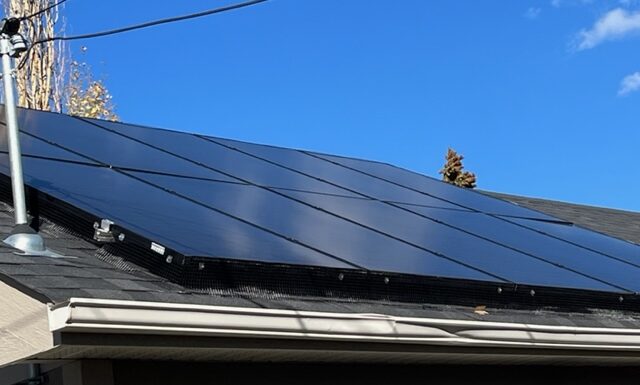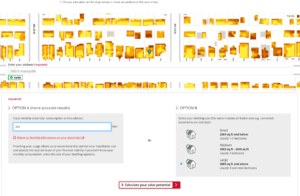Mapping Solar Potential for Calgary Residents

Projects Sponsor
In February 2020, Solas Energy Consulting contracted with the City of Calgary to design a Residential Solar Calculator to support the City’s residential solar (photovoltaic) development program. The calculator provides a view of cost savings over conventional energy usage, estimated cost for installation, production potential based on residential address, and environmental benefits, handing Calgary residents a treasure map to solar savings.
Calgary Average Residence Benchmarking
Decarbonising the housing sector is key to fighting climate change and the City of Calgary knows it; in 2020, Calgary estimated that 29% of its greenhouse gas (GHG) emissions were from residential buildings. The City sought to find a way to shift that stat. What emerged was a project that engages, informs, and inspires Calgary residents by educating them on the economic and environmental benefits of solar energy installations.
The City partnered with Solas Energy Consulting to develop a calculator that shows homeowners the impact of their choices by illustrating potential GHG emissions reductions using solar power. Solas Energy is committed to helping companies and organisations achieve a sustainable, zero-carbon future through its work in renewable energy and climate change solutions. As a Calgary-based business, they particularly embraced the opportunity to support the City’s goal of educating its residents on the benefits of solar energy retrofits for residential dwellings.

Calgary Residential Calculator Inputs
Their expertise in developing models to benchmark, monitor, and verify environmental performance of renewable energy infrastructure set Solas Energy up well for the job. From the outset, their objective was to provide accurate data to represent the potential of solar installations for residential addresses throughout Calgary. These would include accurate capital and installation cost estimates, as well as accurate payback period data. This work provided residents with all the information needed to make decisions about adopting solar energy for their homes.
The project––which was managed by the Climate, Corporate Analytics and Innovation and the Customer Service and Communications teams at the City of Calgary––began with the evaluation of methods for estimating solar potential for residential addresses throughout Calgary. This included uncovering third-party data and evaluating existing tools to understand solar production potential. As a result, the project engaged with Google Project Sunroof, set up a Calgary-based site for collecting benchmark data, and integrated the National Renewable Energy Laboratory’s (NREL) PVWatts Calculator to better understand solar production potential.

Calgary Residential Calculator Outputs
Once they’d determined the full scope of the project, Solas Energy outlined the specific assumptions, factors, and analyses to be used within Calgary’s mapping model. Next, the Solas Energy team investigated the best tools and methods to support the project objectives to ensure an accurate final product was delivered. The types of solar photovoltaic (PV) technology to be used as a basis for estimates were defined and rooftop installation best practices for optimal solar PV installation were reviewed. Economic inputs that have the potential to impact cost and payback estimates were also evaluated.
Throughout the course of the two-year project, this model was refined to provide the most accurate outputs possible for consumers—and consumers wanted to know. The Solar Residential Calculator landing page had more than 12,000 visitors within the first 30 days after launch on the City of Calgary’s website. Local service providers have since indicated a steady increase in inquiries for residential solar installations. This is evidence that the online tool has lowered the barrier of entry for residents interested in solar energy.
Informed of both potential costs and economic and environmental benefits, residents are empowered to follow up with a professional assessment of their property, getting their own personal treasure map to solar savings.













